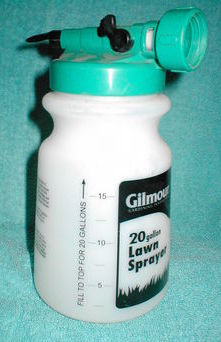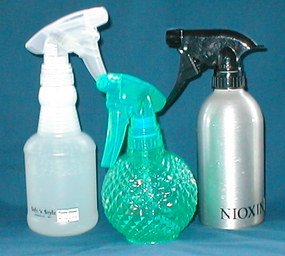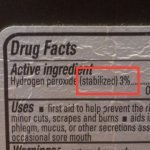More about my adventures with cat abscess home treatment,
using hydrogen peroxide and ozonated olive oil....
I'm going to talk mostly about my own experiences with cat abscess home treatment, along with some general comments on abscesses. Infections that become an abscess – tender, swollen with fluid – are ones where the body simply is not keeping up with the infection, so the situation has already escalated into an abscess.
Cat abscess home treatment is not recommended. Taking your cat to a vet is recommended!
Please bear in mind that abscesses vary in severity -- they can be really serious! A vet will be able to assess the situation, open the abscess, properly clean the wound, and (often) prescribe antibiotics.
I'm sharing my experiences because I know that sometimes (for a variety of reasons) going to a vet is not possible, and/or may not be possible immediately.
My experience with cat abscess home treatment: Step 1: An abscess needs to be opened to heal
In order to help the infection to heal, the infection has to be open to air, instead of closed off. What I’ve done is to hold a very warm washcloth over the abscess (on the cat), for a few minutes. (No, the cat did not like this…..) I want the washcloth hot, as the heat will help to open the area, but I don’t want it too hot, as it would be too uncomfortable. I’ve held the hot damp washcloth over the abscess – gently – for a couple of minutes. Then, if possible, reheat it and do a couple more minutes. How long you can do this depends a great deal on the cat involved, of course. With a cooperative cat I’d try for 10 minutes 3 times a day. Actually, I’d try for that with an uncooperative cat too!
And, since abscesses can be both painful and serious, I’m looking for results soon. I’m watching closely to see if the abscess is getting worse. The result I’m looking for (with the hot wash cloth) is for the wound to soften up, and reopen, so that the infection (pus) can drain out. Then it is a matter of keeping it open and clean so it can heal.
If the cut has re-opened, it is okay to gently encourage the pus and fluid out, but be gentle. Don’t create more pressure or try to force the wound open.
My cat abscess home treatment experience: Step 2: draining and keeping it clean
In the case I’m thinking of, after a few sessions with the hot damp washcloth, the would opened up. That helped right away, as the pressure in the abscess was relieved, and the infection could drain. Then I cleaned the area with some liquid 3% hydrogen peroxide. I hoped that would be enough help. I was quite worried about the cat.
Unfortunately, though, for this particular cat, cleaning the wound with hydrogen peroxide was not enough. The infection continued, and, in fact, the wound got all dirty and looked awful. The liquid hydrogen peroxide that I was using just couldn’t stay on long enough to do it’s job, and I couldn’t put liquid hydrogen peroxide on the wound often enough or for long enough – the cat didn’t like the procedure at all and he was steering clear of me. I finally realized I needed to use “sticky” hydrogen peroxide.
With a different cat, I might have been able to bathe the wound in hydrogen peroxide for longer, and more often. Also, a different cat might have rested and kept the open wound from getting dirty… this cat, no. He got dirty. Also, it was unfortunate that I didn’t think of sticky peroxide sooner, as the wound was looking bad and the cat was starting to look really bedraggled too.
(Sticky hydrogen peroxide is hydrogen peroxide mixed into a gel with aloe and glycerine. The anti-bacterial part is the hydrogen peroxide – the other ingredients are just to get it to “stick” and stay in one place for a while. On an open wound, it is going to sting. I’m not sure what the best concentration is for an abscess on a cat, but I would start with about 1% hydrogen peroxide.)
Sticky hydrogen peroxide worked great in this case for cat abscess home treatment. It still took some time for the wound to heal, but I could see right away (within a day) that it was going in the right direction. The wound looked better, rather than worse. I applied sticky peroxide a couple more times. (I think I used 3% gel at that point. Now I would use 1% instead.)
Once the wound has opened and drained it is very important to monitor and clean the wound, so that it does not heal over with infection inside again. The answer is to keep it disinfected as much as possible, which will also help the cat’s immune system to catch up and help healing along.
Hydrogen peroxide vs. ozonated olive oil
Another option to help keep an abscess clean (after it has drained) is ozonated olive oil. (Yeah, I realize this is NOT hydrogen peroxide!) Ozonated olive oil is sticky, so it tends to stick on (although cats will lick it off). Also, ozonated olive oil is not drying in the way that peroxide is, which can be good (depending on the situation). Actually, it is more like softening, because it is oil.
The cats I've used ozonated olive oil on hate the taste (as do many or most people!)
Ozonated olive oil is somewhat similar to peroxide, in that it kills most bacteria and viruses. (Both of them will work really well on any anaerobic pathogens, because both of them release oxygen.)
Cat skin infections which are not abscessed, and cuts on cats that are not infected
I’ve also used sticky hydrogen peroxide (1% to 3%), and liquid 3% hydrogen peroxide, and ozonated oil on wounds that are not abscessed. The cats I’ve used it on do not think well of this at all, they really don’t like it. But, for a cut that is looking at all infected, I’ll do it. It has worked really well. In fact, I think it has worked better on cat skin infections than on the human cuts I’ve used it on. Maybe cats just respond well?
How cooperative the cat is will also be a factor. If the cat is not too upset by having some 3% hydrogen peroxide dabbed onto its fur and skin around a cut, then one can dab it on for a while. On the other hand, if the cat is alarmed and runs off as soon as you begin this, you’re not going to get very far. Most cats are not going to put up with having their paw (or any other part of their body) soaked in liquid. Also, hydrogen peroxide on an open wound stings -- so it is easy to sympathize that this is not so pleasant. However, in order for the hydrogen peroxide to do its work, it does need to be in direct contact with the infection – and it takes some time for the hydrogen peroxide to do its work. It needs to stay on the infection for a little while.
I would say that for a cut that is healing with no visible infection or mild infection, I might start with just cleaning it with liquid 3% hydrogen peroxide. If it is looks worse the following day, then I would be likely to use “sticky” hydrogen peroxide (1% to 3%) or ozonated olive oil. (This is going to work better than liquid peroxide, simply because it will stay on longer.) For an open wound on a cat that looks a bit infected, I would be concerned about the stinging, so I might use 1% hydrogen peroxide gel. Again, I would check in a day to see how the wound is doing. Continuing to check back is very important.
CAUTION!
- Do NOT use hydrogen peroxide on deep or serious wounds.
- Use of peroxide on cuts which are not infected is a point of disagreement. Some sources say that this can delay healing or increase scarring.
- Hydrogen peroxide, on any cut or wound, can really sting. Be considerate. You can always add water and use a weaker solution.
- Cat abscess home treatment is NOT recommended! The safer course is to take your cat to the vet.
Keeping yourself disinfected
If you are cleaning infected cuts or doing cat abscess home treatment, it’s a good idea to keep yourself as clean as you can.
One way to do this would be to wear rubber gloves (a new pair each time).
You
could also wash your hands well afterwards, and then spray your hands
with 3% hydrogen peroxide. Or wash your hands well and then soak your
hands in a bowl of 3% hydrogen peroxide for a few minutes. Or rub some ozonated olive oil on your hands.
Return from cat abscess home treatment to Skin Infections
Subscribe to Hydrogen Peroxide Explorers' Newsletter
Our newsletter will keep you up to date on new pages added, plus some Adventures you can try at home:
No worries! Your email will be used ONLY to send you newsletters.
(Gallon):
(5 pounds):
For some links, I receive ad commissions, at no cost to you. More info here.
Site Search:
Subscribe to our newsletter (free):
Note: Products shown are sold by Amazon. This site does NOT sell hydrogen peroxide.
Do you like this site?

Gardening: attach sprayer to garden hose; use to dilute peroxide and spray on the garden

Spray bottles for peroxide




